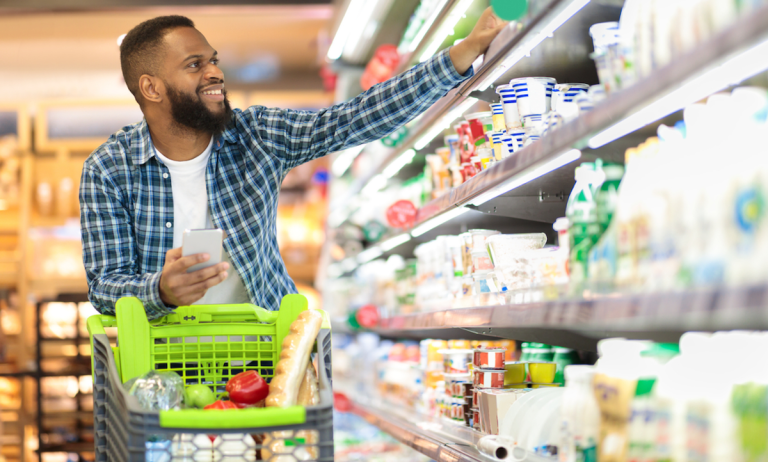
As consumers, especially younger generations, grow accustomed to having their needs met at a rapid pace, Ahold Delhaize USA is seeing shoppers be less loyal to specific brands.
In an interview with PYMNTS, Bobby Watts, SVP executive lead at the grocery giant’s AD Retail Media arm, spoke to how both the current economic climate and the rise of digital are eroding grocery shoppers’ loyalty.
“They’re not as brand loyal as they used to be. … I think it’s [because of] two things. I definitely think that economic pressures are causing consumers to make choices … based on price or promotion or value,” Watts said. “But we also see … the younger generation has grown up in a world where everything is instantaneous, and things are moving at such a fast pace, that they’re willing now to experiment more and test different brands, whereas the other demographics may not be as apt to do so.”
Indeed, consumers are making changes to their grocery purchasing habits in response to cost pressures. PYMNTS Intelligence data show that 36% of consumers have traded down from their go-to grocery products to cheaper versions of them in response to inflation.
In fact, grocery shoppers tend to show considerably stronger affinity toward merchants than products. PYMNTS Intelligence research shows that 53% of grocery customers say that they are more loyal to merchants than products, and only 35% are more loyal to products than merchants.
One of the ways that brands are looking to win consumers’ loyalty is through personalization, but not all such initiatives are successful. Shoppers increasingly expect tailored offers and recommendations that align with their preferences and purchase history. However, many find themselves underwhelmed by the generic nature of the promotions they receive.
“We want to make sure that we’re … using first-party data to create value for them, and we do that through personalized offers,” Watts said. “We want to make sure [there are] things in offers that are relevant to them based on their purchase history.”
PYMNTS Intelligence’s study “Personalized Offers Are Powerful — But Too Often Off-Base” finds that 83% of consumers are interested in receiving personalized offers, but only 44% find the ones that they are currently receiving to be very relevant to their needs.
By analyzing consumer purchase patterns and engagement metrics, retailers can deliver more relevant and timely offers, enhancing the overall shopping experience and fostering deeper customer relationships.
Ahold Delhaize is seeing 90% of purchases come through its brick-and-mortar stores.
“What’s old is new again,” Watts said. “We seem to be taking things back in store.”
Watts highlighted that the integration of retail media with physical stores is part of this resurgence of in-person, with on-site digital interfaces in these stores creating a hybrid retail media space. Retailers are combining these technologies with analog brand signage and mobile app integrations to engage consumers at multiple touchpoints within the store environment.
Additionally, the omnichannel behavior of grocery shoppers has been significantly shaped by the pandemic. The rise of click-and-collect, expedited pickup windows, and third-party delivery services such as DoorDash and Instacart demonstrate the flexibility and immediacy consumers now demand.
Watts observed that shoppers are not confined to a single mode of shopping; instead, they seamlessly navigate between digital and physical channels based on convenience and availability.
The PYMNTS Intelligence study “2024 Global Digital Shopping Index: U.S. Edition,” created in collaboration with Visa Acceptance Solutions, found that roughly a third of U.S. consumers are Click-and-Mortar™ shoppers, preferring shopping journeys that combine the digital and the physical.
Looking ahead, as the retail media network aims to understand shoppers’ behavior across digital and physical channels, Watts expects artificial intelligence (AI) and machine learning (ML) to play a key role.
“One of the things that we’re working on is, how do we think about bringing a generative AI layer over top of media planning, so that you have all the signals coming from the multitude of channels that we offer,” Watts said. “Leveraging generative AI and ML to create the loop that takes the wonderful first-party data and measurement capabilities we have as a retail media network … to build a media plan based on mission objectives.”